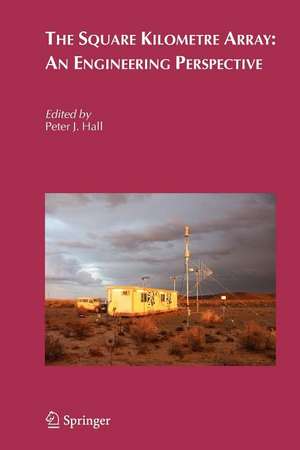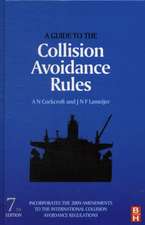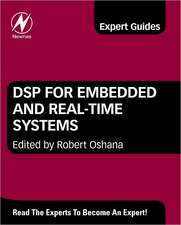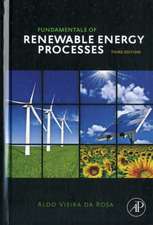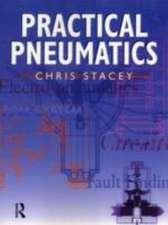The Square Kilometre Array: An Engineering Perspective
Editat de Peter J. Hallen Limba Engleză Paperback – 19 oct 2010
| Toate formatele și edițiile | Preț | Express |
|---|---|---|
| Paperback (1) | 951.14 lei 6-8 săpt. | |
| SPRINGER NETHERLANDS – 19 oct 2010 | 951.14 lei 6-8 săpt. | |
| Hardback (1) | 813.15 lei 17-24 zile | +69.74 lei 6-12 zile |
| SPRINGER NETHERLANDS – 25 oct 2005 | 813.15 lei 17-24 zile | +69.74 lei 6-12 zile |
Preț: 951.14 lei
Preț vechi: 1159.94 lei
-18% Nou
Puncte Express: 1427
Preț estimativ în valută:
182.03€ • 188.59$ • 151.91£
182.03€ • 188.59$ • 151.91£
Carte tipărită la comandă
Livrare economică 21 martie-04 aprilie
Preluare comenzi: 021 569.72.76
Specificații
ISBN-13: 9789048169696
ISBN-10: 9048169690
Pagini: 436
Ilustrații: VI, 430 p.
Dimensiuni: 160 x 240 x 23 mm
Greutate: 0.61 kg
Ediția:Softcover reprint of hardcover 1st ed. 2005
Editura: SPRINGER NETHERLANDS
Colecția Springer
Locul publicării:Dordrecht, Netherlands
ISBN-10: 9048169690
Pagini: 436
Ilustrații: VI, 430 p.
Dimensiuni: 160 x 240 x 23 mm
Greutate: 0.61 kg
Ediția:Softcover reprint of hardcover 1st ed. 2005
Editura: SPRINGER NETHERLANDS
Colecția Springer
Locul publicării:Dordrecht, Netherlands
Public țintă
ResearchCuprins
The Square Kilometre Array: An International Engineering Perspective.- The Allen Telescope Array.- Sky Noise Limited Snapshot Imaging in the Presence of RFI with LOFAR’s Initial Test Station.- The LOFAR Central Processing Facility Architecture.- Hemispheric Imaging of Galactic Neutral Hydrogen with a Phased Array Antenna System.- Electronic Multi-Beam Radio Astronomy Concept: Embrace a Demonstrator for the European SKA Program.- The Australian SKA New Technology Demonstrator Program.- Low Noise Performance Perspectives of Wideband Aperture Phased Arrays.- Effective Sensitivity of a Non-Uniform Phased Array of Short Dipoles.- Low Frequency End Performance of a Symmetrical Configuration Antenna for the Square Kilometre Array (SKA).- Radio Astronomy Antennas by the Thousands.- A Spherical Lens for the SKA.- Efficiency Analysis of Focal Plane Arrays in Deep Dishes.- Model Validation and Performance Evaluation for the Multi-Tethered Aerostat Subsystem of the Large Adaptive Reflector.- Modeling of a Feed Support System for Fast.- Cylindrical Reflectors.- Local Oscillator Distribution Using a Geostationary Satellite.- RF Design of a Wideband CMOS Integrated Receiver for Phased Array Applications.- Fiber Optic Network Technology for Distributed Long Baseline Radio Telescopes.- ALMA and e-MERLIN Data Transmission Systems: Lessons for SKA.- Array Signal Processing for Radio Astronomy.- Ska Correlator Advances.- RFI Mitigation and the SKA.- A 256 MHz Bandwidth Baseband Receiver/Spectrometer.- The Square Kilometre Array Molonglo Prototype (SKAMP) Correlator.- COTS Correlator Platform.- DSN Deep-Space Array-Based Network Beamformer.- Software Development for the Square Kilometre Array.- A Simple Model of Software Costs for the Square Kilometre Array.- SKA and EVLA Computing Costsfor Wide Field Imaging.- Efficient Imaging Strategies for Next-Generation Radio Arrays.- System Optimisation of Multi-Beam Aperture Synthesis Arrays for Survey Performance.- SKA Cost Model for Wide Field-of-View Options.- Cost Effective Frequency Ranges for Multi-Beam Dishes, Cylinders, Aperture Arrays, and Hybrids.- Cylinder — Small Dish Hybrid for the SKA.- RFI Test Observations at a Candidate SKA Site in China.
Notă biografică
Peter Hall is the International Project Engineer for the SKA project. He also chairs the International Engineering Working Group for the project, as well as its Industry Liaison Task Force. Dr Hall has been associated with the SKA since 1997 and prior to his current role he led the CSIRO (Australia) SKA program. He is a Fellow of the Institution of Engineers (Australia) and a member of several other international engineering bodies.
Textul de pe ultima copertă
This volume is an up-to-date and comprehensive overview of the engineering of the Square Kilometre Array (SKA), a revolutionary instrument which will be the world’s largest radio telescope. Expected to be completed by 2020, the SKA will be a pre-eminent tool in probing the Early Universe and in enhancing greatly the discovery potential of radio astronomy in many other fields. This book, containing 36 refereed papers written by leaders in SKA engineering, has been compiled by the International SKA Project Office and is the only contemporary compendium available. It features papers dealing with pivotal technologies such as antennas, RF systems and data transport. As well, overviews of important SKA demonstrator instruments and key system design issues are included. Practising professionals, and students interested in next-generation telescopes, will find this book an invaluable reference.
